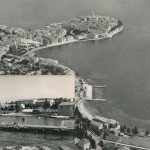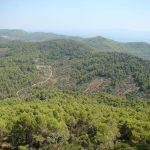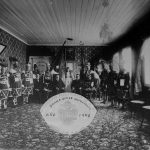One of the first associations when you mention Korčula to anyone is usually Marco Polo, the Venetian merchant and world traveler.
When telling the tale of Marco Polo’s life story, it’s important to remember several key factors: all of the events we’re talking about took place in 13th century, over 700 years ago, and most of the things we think we know about him are from books, written either by him or by his contemporaries, and some of them (Marco included) were known for, let’s just say, imbellishing their stories.
So, there aren’t really a lot of hard facts that are provable about his life and travels, and first of those things that we’re just not sure of and is often a point of dispute is where Marco Polo was born. The people of Korčula will tell you that of course Marco Polo was born on Korčula, where else, Depolo is a common Korčulan name and that’s his family and why are we having this discussion. But the fact is, we only know for sure that he was born in 1254 in the Republic of Venice (which at that point did, in fact, include Korčula), probably in Venice but possibly in Constantinople or on Korčula, we just don’t know for a fact and will probably never know. His family, Polo, is strongly believed to be of Dalmatian origin, possibly Korčulan, so there might be a family link to Korčula for Marco.
Marco mostly grew up in Venice, with his aunt and uncle, as his mother passed away when he was very young, and his father, Nicollo Polo, along with his brother Maffeo, travelled through much of Asia on a trading voyage, doing business with the most powerful people of Asia at the time. They returned to Venice when Marco was around 15, and decided to go back to Asia and take Marco with them – they set off for Asia on their adventures, later to be described in Marco’s book when Marco was 17.
Marco returned to Venice 24 years later, in 1295, as a rich man, with his fortune converted into gemstones. He used some of those riches to participate with his own galley in the war Venice was fighting against the Republic of Genoa at the time, as any proper patriot should. His galley participated in several battles, and he was caught by the Genovese navy during one of those battles – some say it was during a battle that took place in 1296 off the Anatolian coast (current-day Turkey), and many others say that he was captured during the famous Battle of Curzola in 1298. The people of Korčula, of course, believe it was the latter, and it was admittedly a much bigger and a more significant battle, and it would seem that he did not spend that much time in imprisoned in Genovese captivity – he was released and sent back home in 1299.
The Korčulan story also claims that he was imprisoned in a Genovese jail on Korčula, in Korčulan Old Town for some time during that period as well, also without any irrefutible evidence. During that time spent in Genovese captivity, Marco dictated his “Book of the Marvels of the World”. in Italian Il Milione, in English, it’s commonly called The Travels of Marco Polo to his cell-mate Rustichello da Pisa, who wrote down the tales Marco told him of his travels. The book is considered to be a romanticized and somewhat imaginative, with experts questioning if Marco ever got as far as he said and how many of the stories written down in the book are his own, and how many are re-telling of the tales of other travellers. It’s still considered an important document of what the world was like in that period, and it had influenced the cartography and inspired Christopher Columbus to go on his travels.
He spent the rest of his life in Venice, as a wealthy merchant, traveling within the Venetian provinces, mostly living low-key. He died in 1324, at a very old age for that period’s standards. In the past 700 years, he became an important figure in the history of Europe and Asia, as well as a title of an American pool game – sometimes the really great people get remembered in the weirdest ways!
In Korčula, Marco Polo is an important part of the tale of the history of the island, so there are numerous Marco Polo shops, a Marco Polo museum (where his life story is told in 7 scenes with gorgeous scenography and mannequins) and you have the possibility to visit his house.











